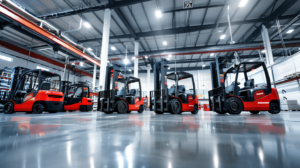Introduction: Why Rough Terrain Forklifts Are Game-Changers
In the world of construction and agriculture, efficiency and reliability are everything. From muddy farmyards to rugged construction sites, heavy-duty machinery must endure tough conditions without slowing down. This is where rough terrain forklifts shine. Built for resilience, stability, and strength, these machines navigate obstacles that would halt ordinary forklifts in their tracks.
Over the years, these forklifts have evolved into indispensable tools across industries. Brands like Nicosail have refined their engineering to deliver exceptional stability and durability, meeting the rigorous demands of operators who work in unpredictable environments. Whether you’re lifting timber in a forest or transporting concrete blocks across a slope, rough terrain forklifts redefine what’s possible on uneven ground.
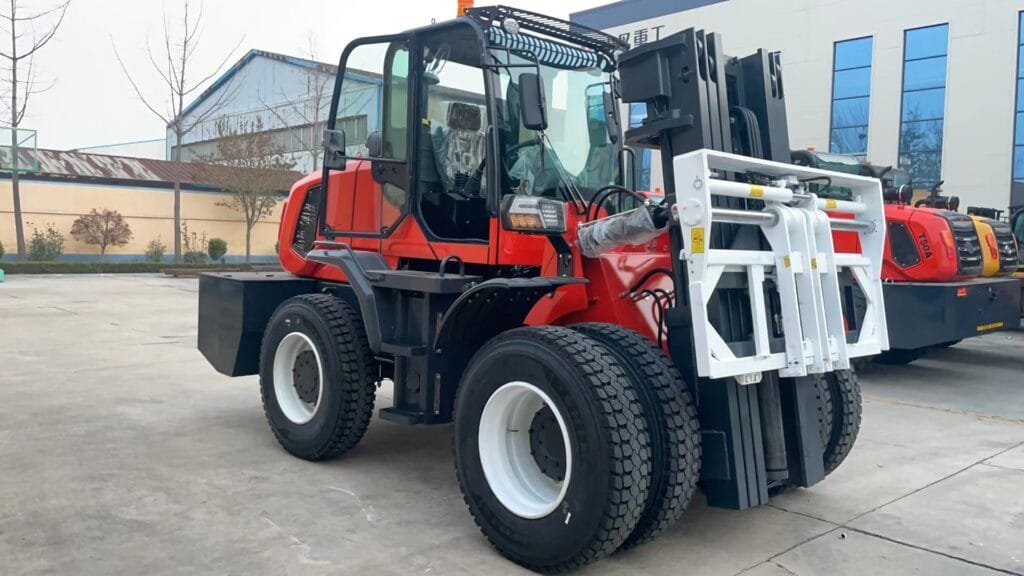
Understanding Rough Terrain Forklifts
Key Features of Rough Terrain Forklifts
Rough terrain forklifts are purpose-built for challenging outdoor environments. Unlike standard forklifts designed for smooth warehouse floors, these machines come equipped with large pneumatic tires, reinforced frames, and robust suspension systems that absorb shock on uneven surfaces.
Some notable features include:
- Four-wheel drive (4WD) systems for traction on gravel, dirt, and mud.
- High ground clearance that prevents undercarriage damage.
- Powerful diesel or hybrid engines for consistent torque.
- Advanced stability control systems ensuring load balance on slopes.
Types of Rough Terrain Forklifts
There are two primary designs:
- Straight Mast Rough Terrain Forklifts – Ideal for lifting heavy pallets and building materials.
- Telescopic Handlers (Telehandlers) – Offer extended reach and lifting versatility for construction sites.
Benefits of Using Rough Terrain Forklifts in Heavy-Duty Work
Rough terrain forklifts bring both productivity and safety to outdoor operations.
Handling Unstable Ground and Inclines
Their large tires and powerful drivetrain enable seamless operation on slippery, sloped, or soft ground, ensuring materials are transported safely across unpredictable surfaces.
Improved Load Handling and Visibility
Operators benefit from enhanced visibility, ergonomic cabs, and responsive hydraulic systems that make precise lifting easy—even when working with bulky or irregular loads.
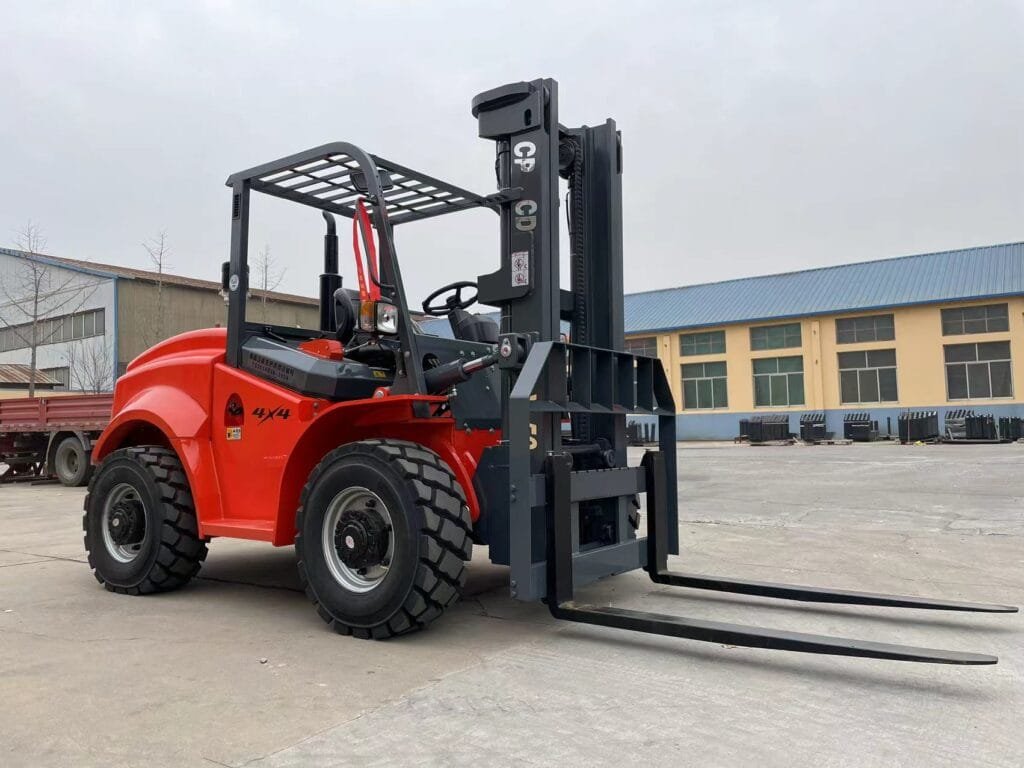
Top Construction Applications of Rough Terrain Forklifts
Construction sites are often chaotic environments filled with uneven ground, debris, and narrow pathways. Rough terrain forklifts thrive in these conditions.
Transporting Building Materials on Job Sites
Moving concrete, steel beams, bricks, and lumber becomes faster and safer with rough terrain forklifts. Their high lift capacities make them ideal for multi-story projects.
Supporting Infrastructure Development
From roadworks to bridge construction, these forklifts play a vital role in supplying materials to crews working in isolated or off-road locations.
Role in Remote or Uneven Terrain Projects
In areas without paved access, rough terrain forklifts are often the only viable lifting solution, keeping projects running smoothly where traditional forklifts can’t operate.
Agricultural Applications of Rough Terrain Forklifts
Farm Logistics and Material Handling
Farms often require moving heavy loads like hay bales, feed bags, and fertilizer pallets across muddy fields. Rough terrain forklifts simplify these tasks, improving workflow and minimizing labor.
Greenhouse and Horticultural Operations
In horticulture, where narrow paths and soft soils are common, forklifts provide precise, reliable movement of supplies without damaging crops or soil structures.
Forestry and Logging Applications
Rough terrain forklifts handle logs, lumber stacks, and forestry equipment efficiently. Their rugged frames prevent damage during heavy lifting, making them invaluable in forestry operations.

Comparing Rough Terrain Forklifts vs. Standard Forklifts
Design and Structure Differences
Rough terrain forklifts feature reinforced chassis and pneumatic tires that offer better grip and cushioning. Standard forklifts, by contrast, use solid tires better suited for smooth warehouse floors.
Operational and Maintenance Factors
While rough terrain models require more fuel and regular maintenance, their durability and versatility provide long-term value—especially for outdoor industries.
Choosing the Right Rough Terrain Forklift
Key Factors: Load Capacity, Lift Height, and Maneuverability
When choosing a forklift, consider:
- Load capacity (typically 2–10 tons)
- Lift height (up to 7 meters)
- Turning radius for confined sites
Safety Features and Operator Comfort
Look for ROPS-certified cabins, 360° visibility, and ergonomic controls to ensure both operator safety and efficiency.
Example of a Reliable Brand: Nicosail Rough Terrain Forklifts
Among modern options, Nicosail has gained attention for its balance of engineering precision, durability, and affordability. Their forklifts are designed with high-torque engines and adjustable hydraulic systems that maintain stability under heavy loads—making them a dependable choice for both agriculture and construction applications.
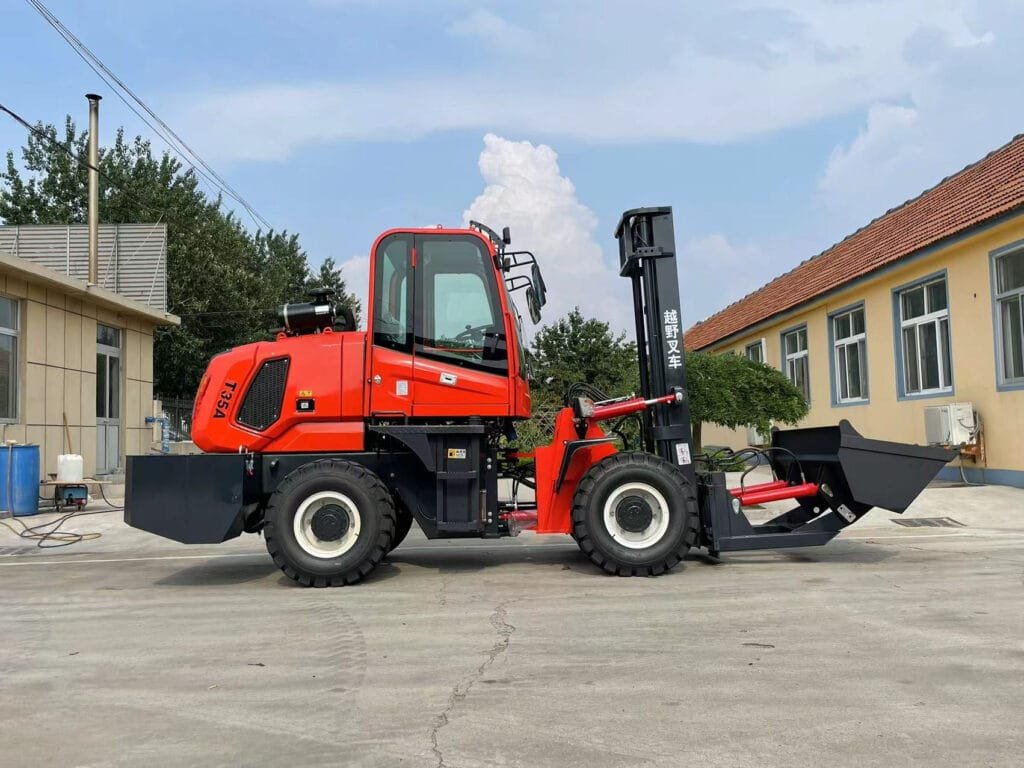
Maintenance Tips for Long-Term Performance
Preventive Maintenance Practices
Regular checks on tires, oil levels, and hydraulic systems can extend equipment lifespan significantly. Always follow the manufacturer’s service intervals.
Common Problems and How to Avoid Them
Avoid overloading, which stresses the hydraulic system. Keep air filters clean, especially in dusty environments, and store machines under shelter to prevent corrosion.
Environmental and Economic Advantages
Sustainable Operations in Agriculture and Construction
Many new models, including some from Nicosail, integrate fuel-efficient engines and low-emission technology, helping businesses reduce both fuel costs and their carbon footprint.
Future Trends in Rough Terrain Forklifts
Integration with IoT and Telematics
Smart sensors now allow real-time monitoring of fuel usage, load data, and maintenance schedules, leading to improved fleet management.
The Rise of Electric Rough Terrain Models
The next generation of forklifts will likely feature electric or hybrid powertrains, combining sustainability with the rugged performance industries demand.
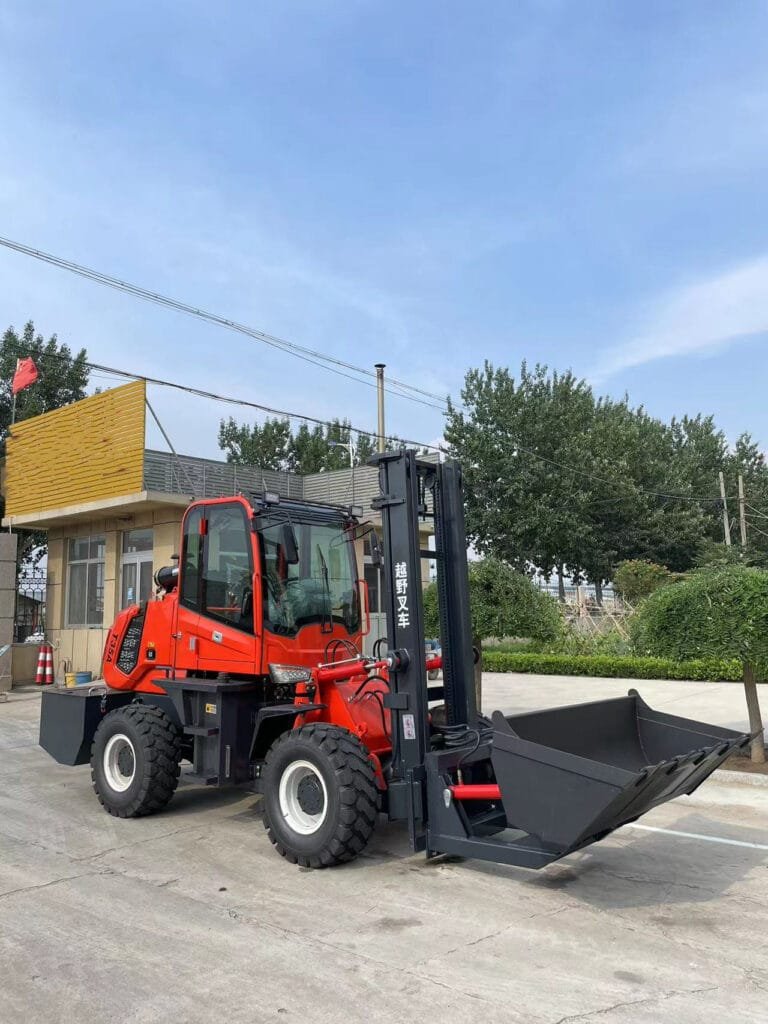
Frequently Asked Questions (FAQs)
Q1: What makes a forklift “rough terrain”?
A: Its large tires, robust suspension, and high ground clearance allow it to operate on uneven and outdoor surfaces.
Q2: Are rough terrain forklifts suitable for small farms?
A: Yes, compact models are ideal for small-scale farming or horticultural operations where maneuverability is crucial.
Q3: How often should rough terrain forklifts be serviced?
A: Typically every 250–500 operating hours, depending on manufacturer recommendations and workload intensity.
Q4: Can rough terrain forklifts be used indoors?
A: While possible, they are best suited for outdoor use due to their tire design and higher noise levels.
Q5: Which brands are considered reliable?
A: Brands like Nicosail, JCB, and Manitou are recognized for their durability and quality engineering.
Q6: What’s the lifespan of a rough terrain forklift?
A: With proper maintenance, these forklifts can last 10–15 years or longer under regular use.
Conclusion: Empowering Worksites with Rough Terrain Forklifts
Rough terrain forklifts have transformed outdoor operations in both construction and agriculture. Their unmatched ability to handle unstable ground, lift heavy loads, and operate efficiently in all conditions makes them indispensable for professionals seeking performance and reliability.
Whether you’re managing a construction project or operating a large farm, investing in a quality machine—like those produced by Nicosail—ensures long-term value and operational safety. As technology continues to evolve, these forklifts will only become smarter, cleaner, and more efficient, paving the way for a more sustainable and productive future.


